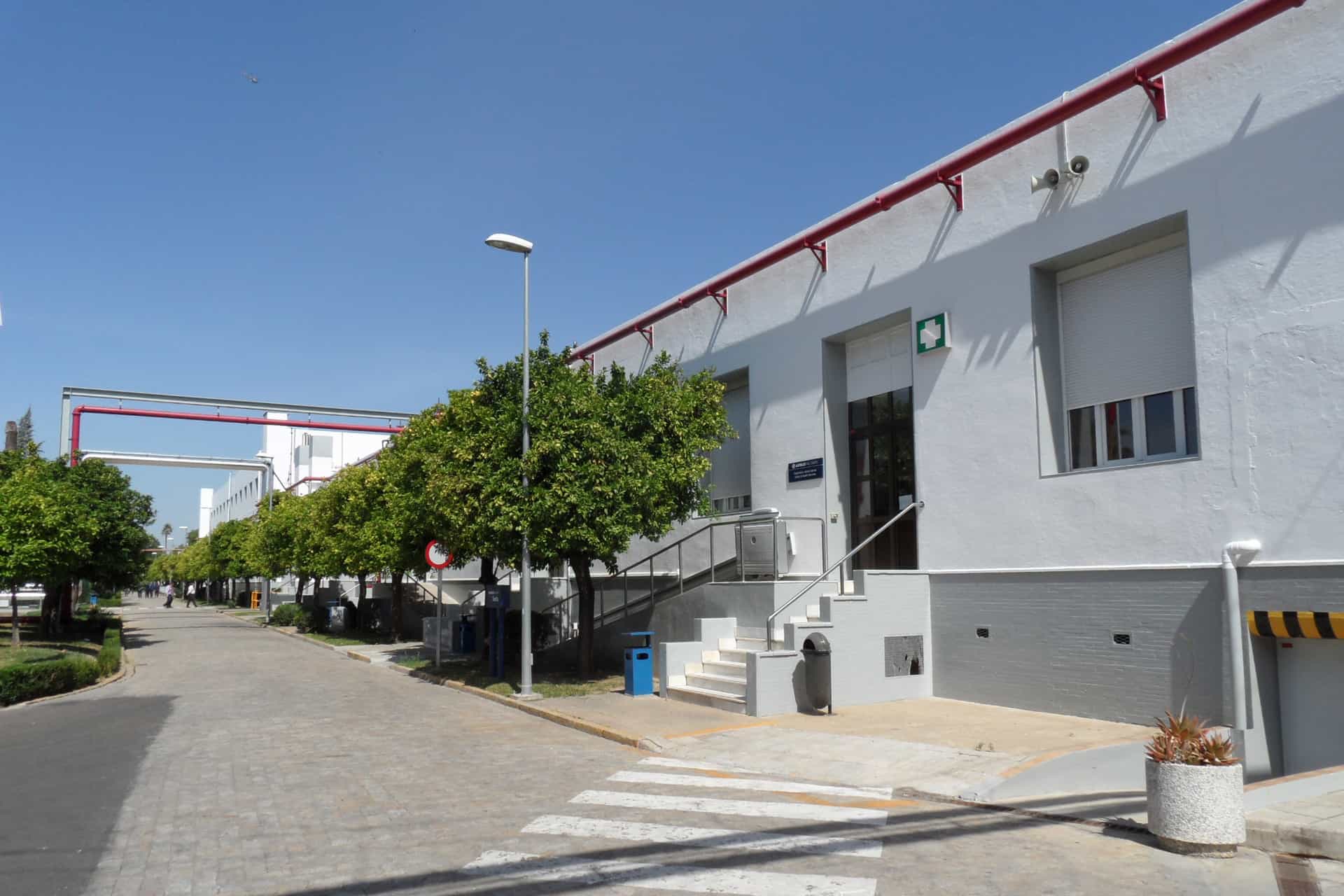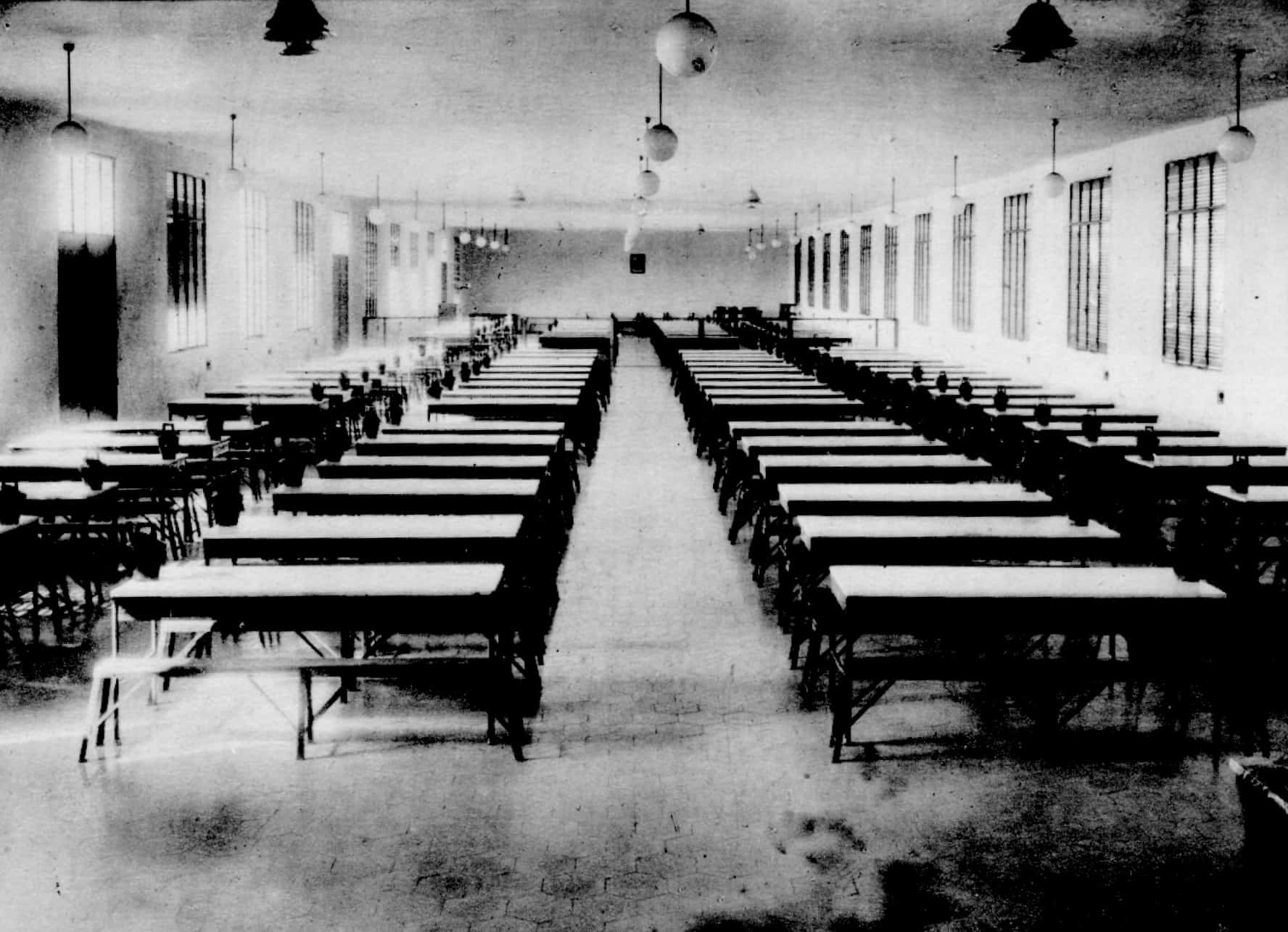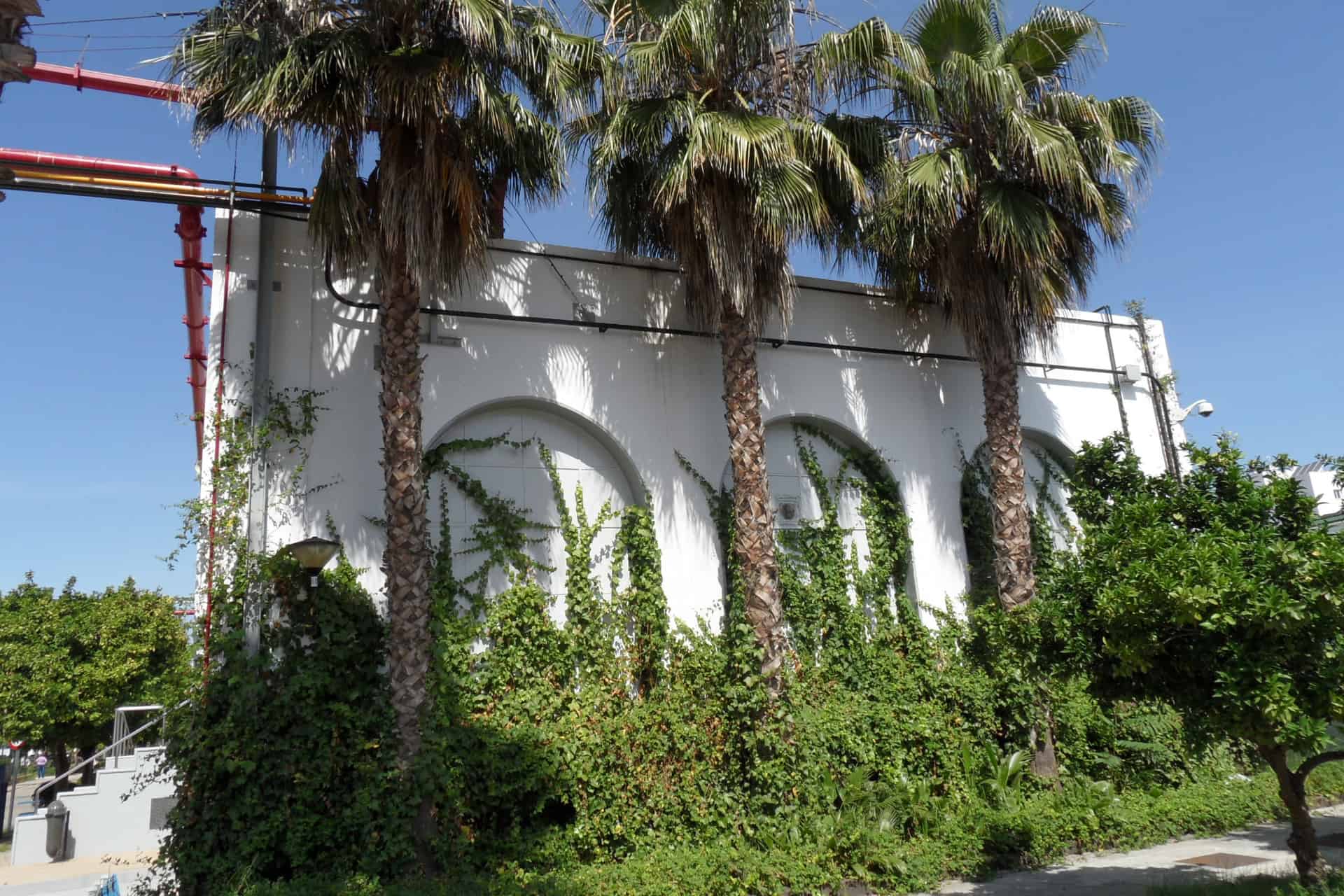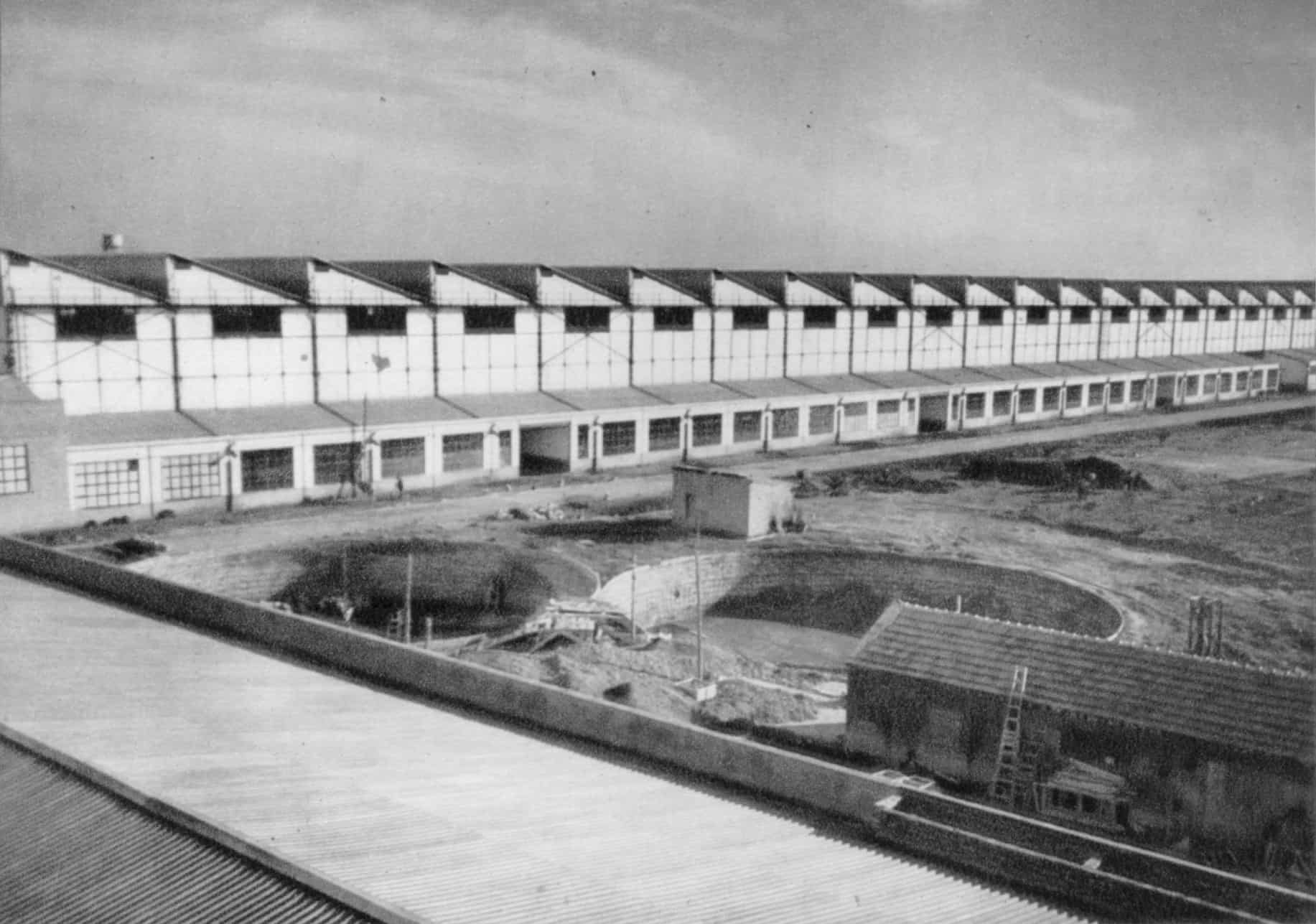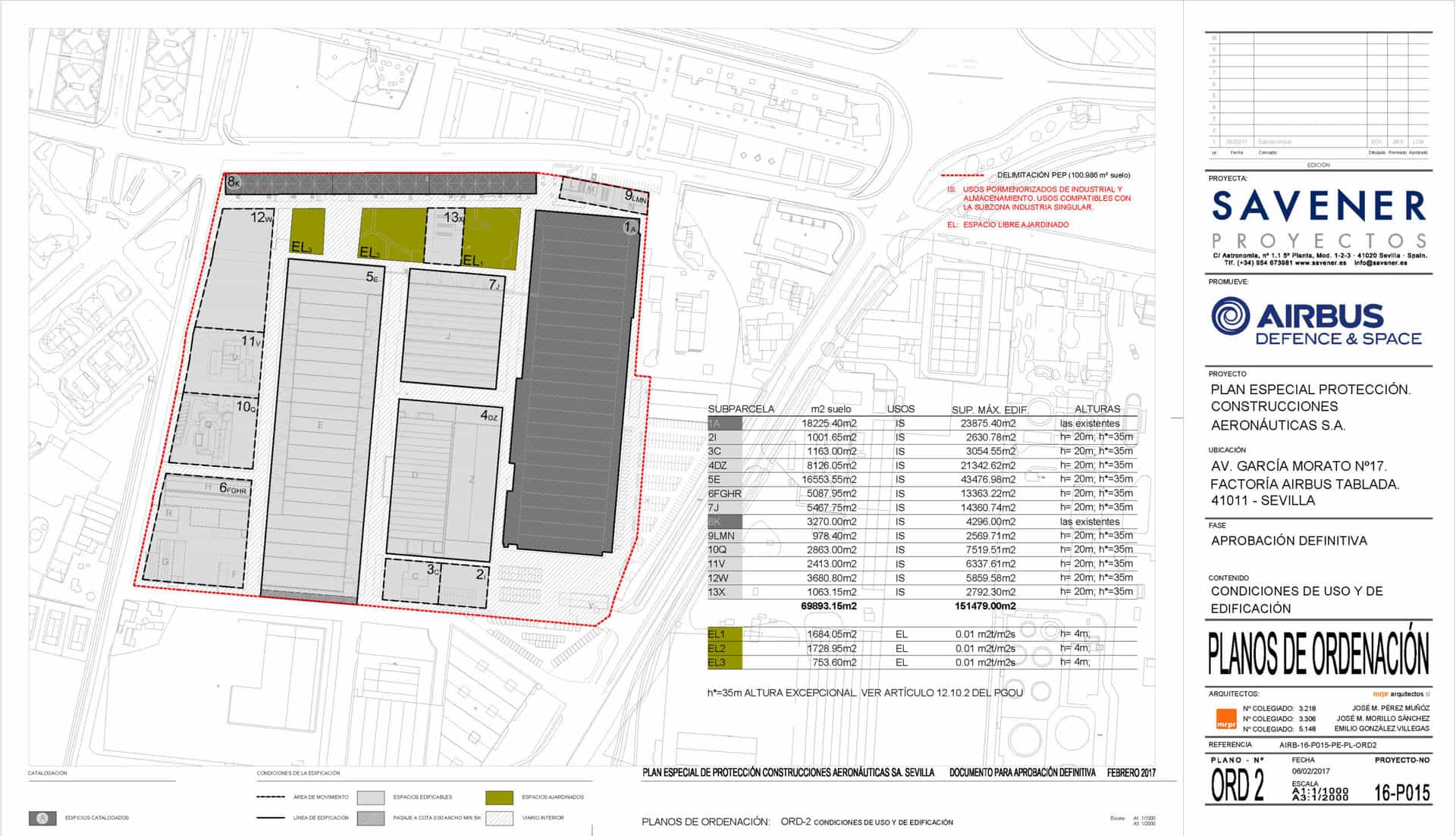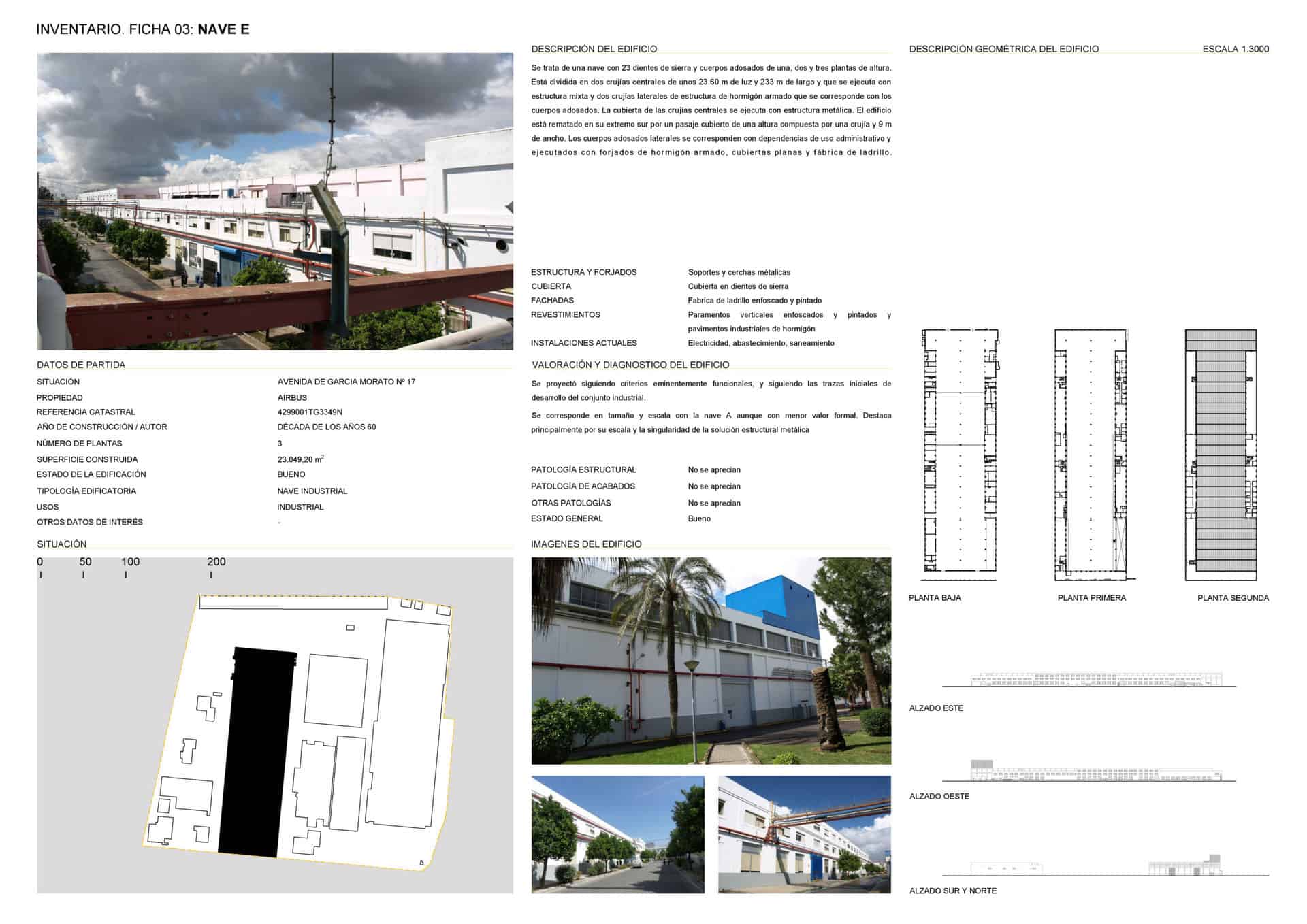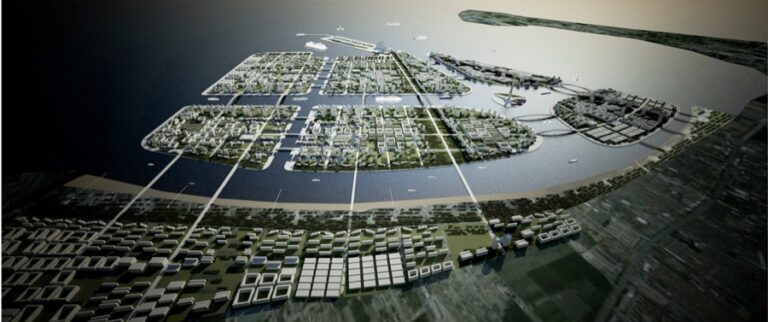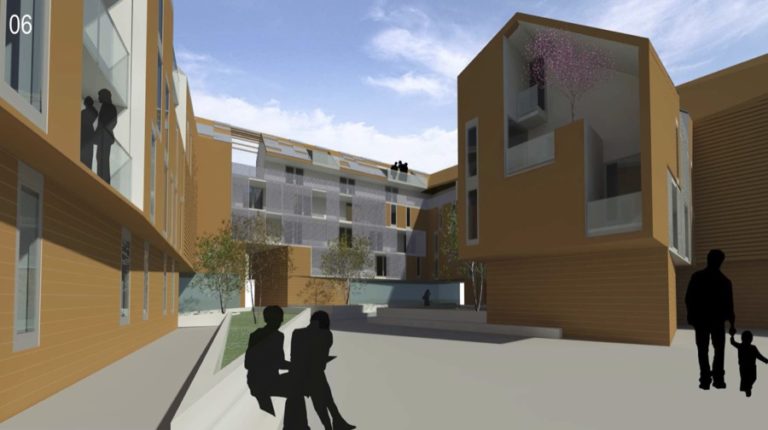Today the work on the terrain of the Tablada Airbus Factory in Seville is subject to the conditions of the Special Plan, as stated in the Peripheral Catalogue of the General Urban Zone Plan of Seville, which specifies its scope and level of protection.
In this context, Savener received the commission to draft this Special Plan, which has been titled the Special Protection Plan for Construcciones Aeronaúticas S.A. (PEP-CASA). The objective of this Plan is to set the protection levels of the buildings that merit this treatment and to determine the use of private land within the factory grounds so that both resolutions complement each other and contribute to the purpose of the Plan, which is no more than to preserve, protect and improve the urban setting, especially the features that form part of the legacy of planning, architectural, historical and cultural values, within the scope that this document specifies.
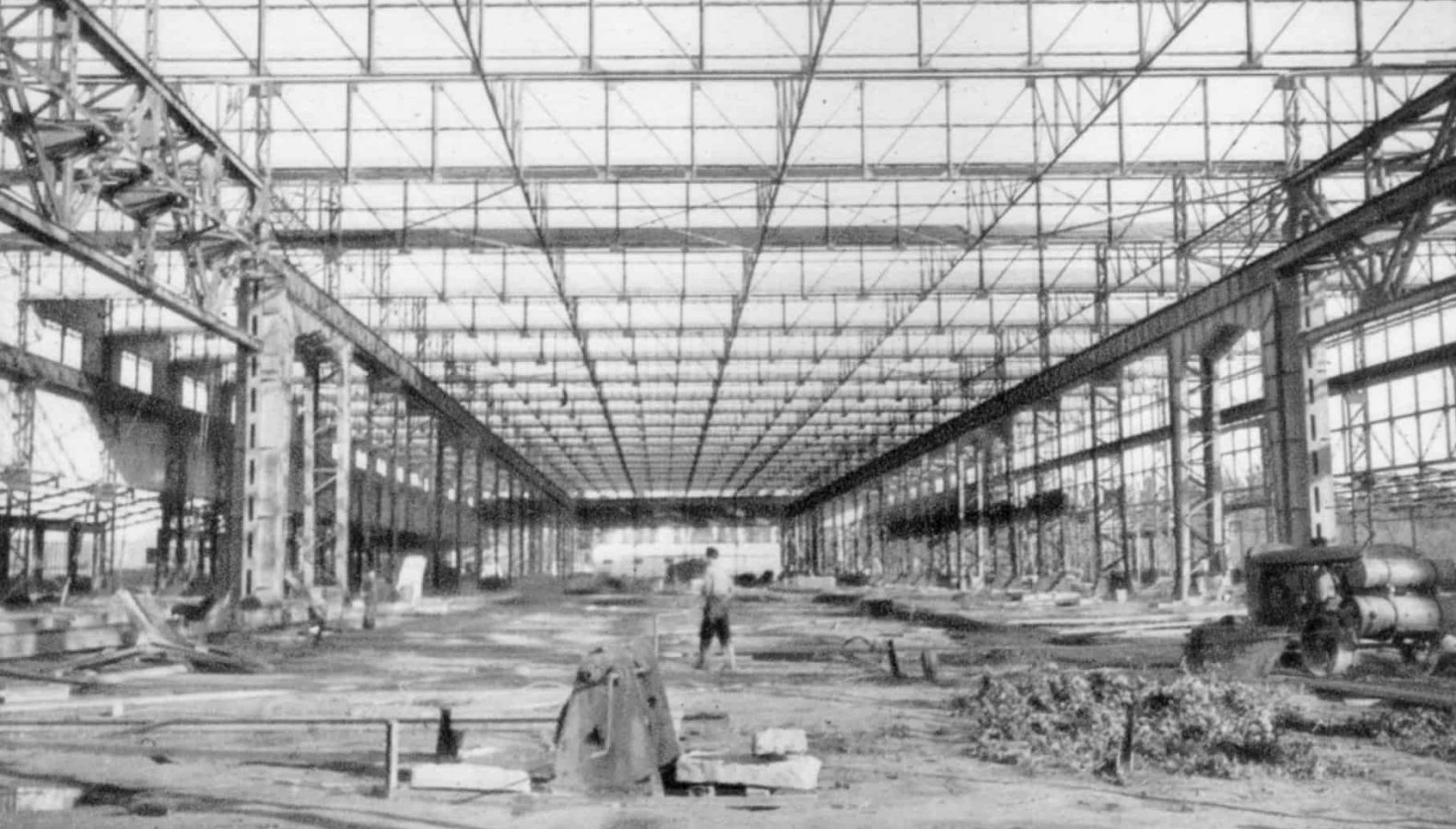
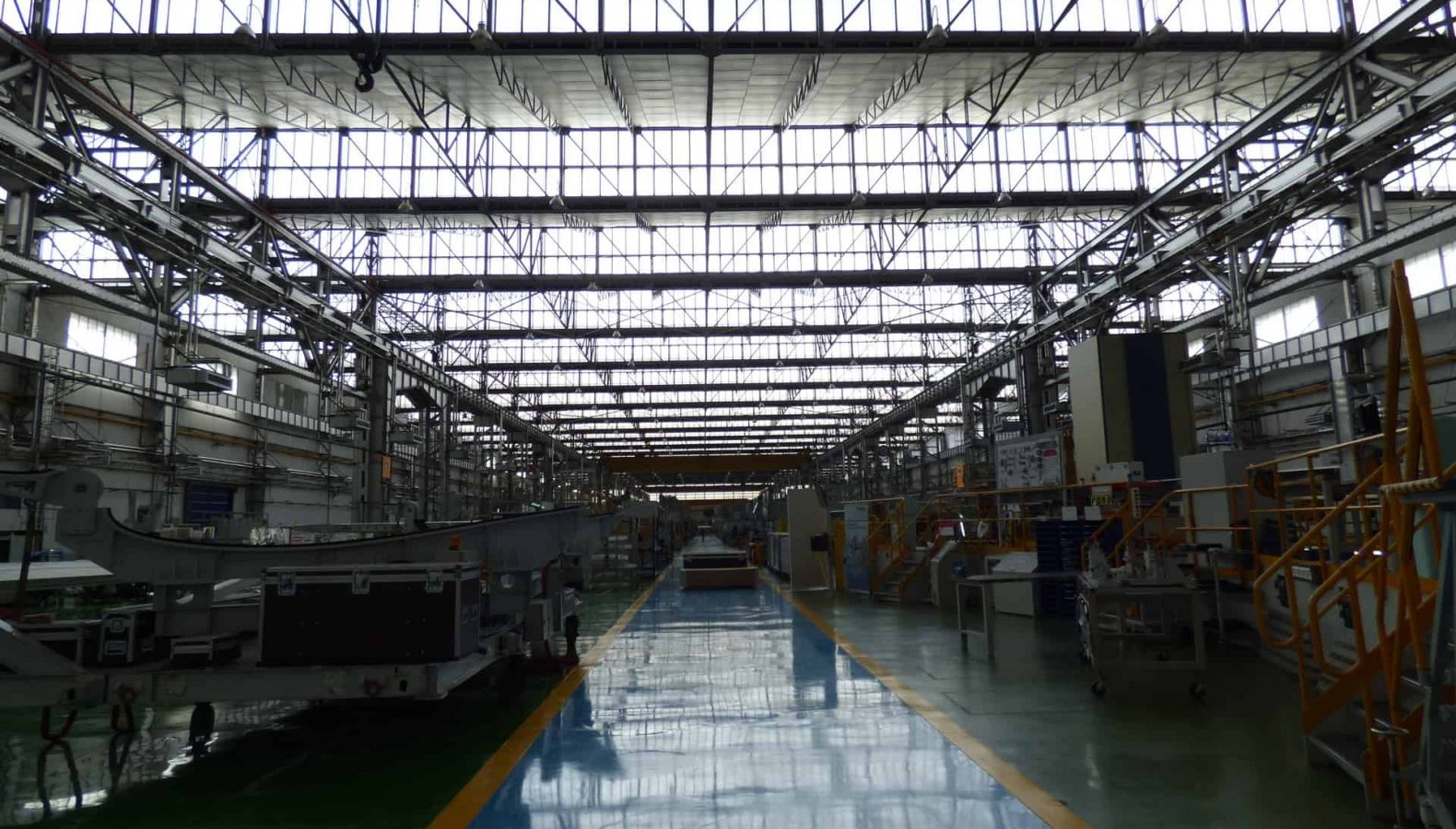
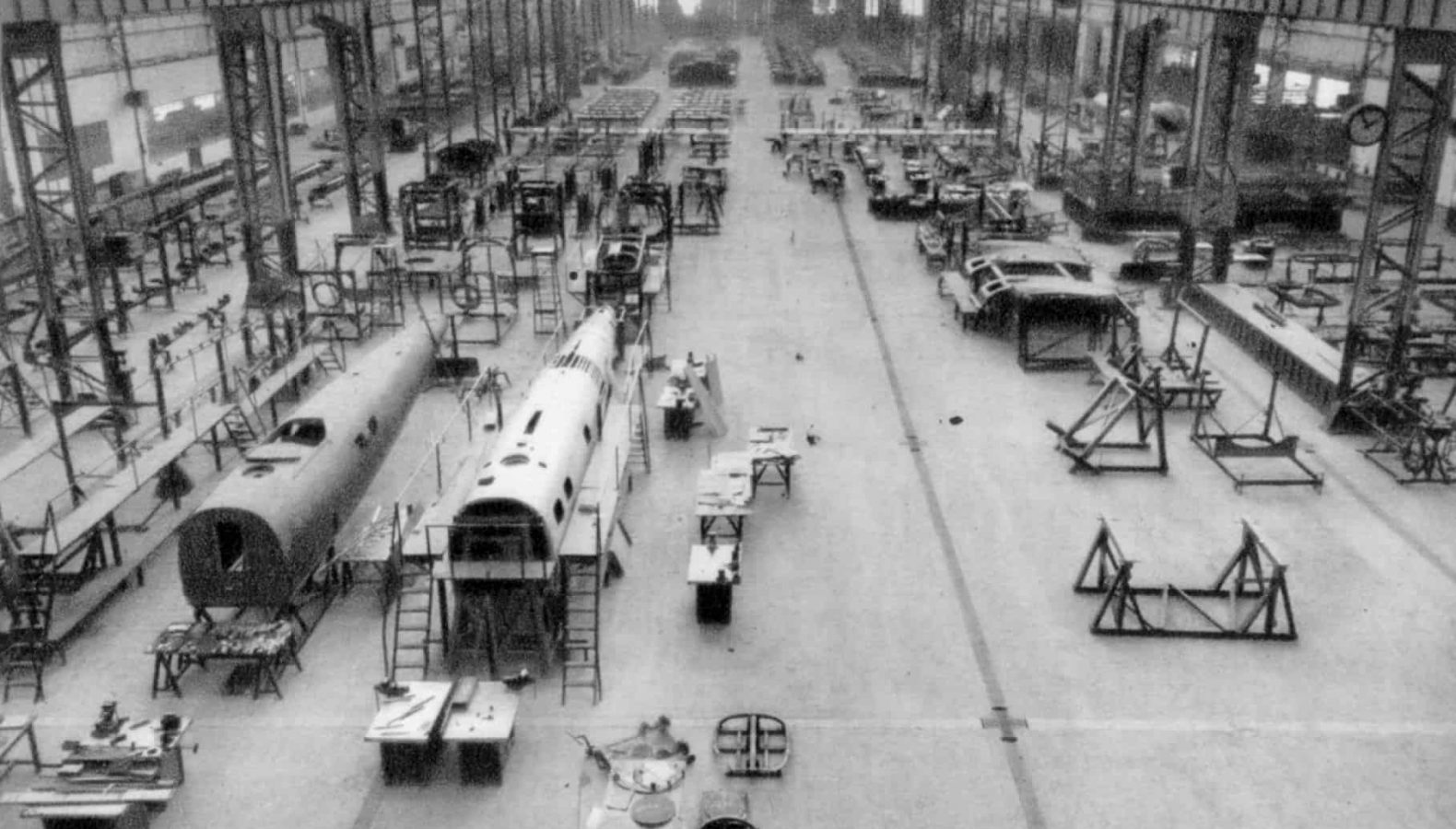
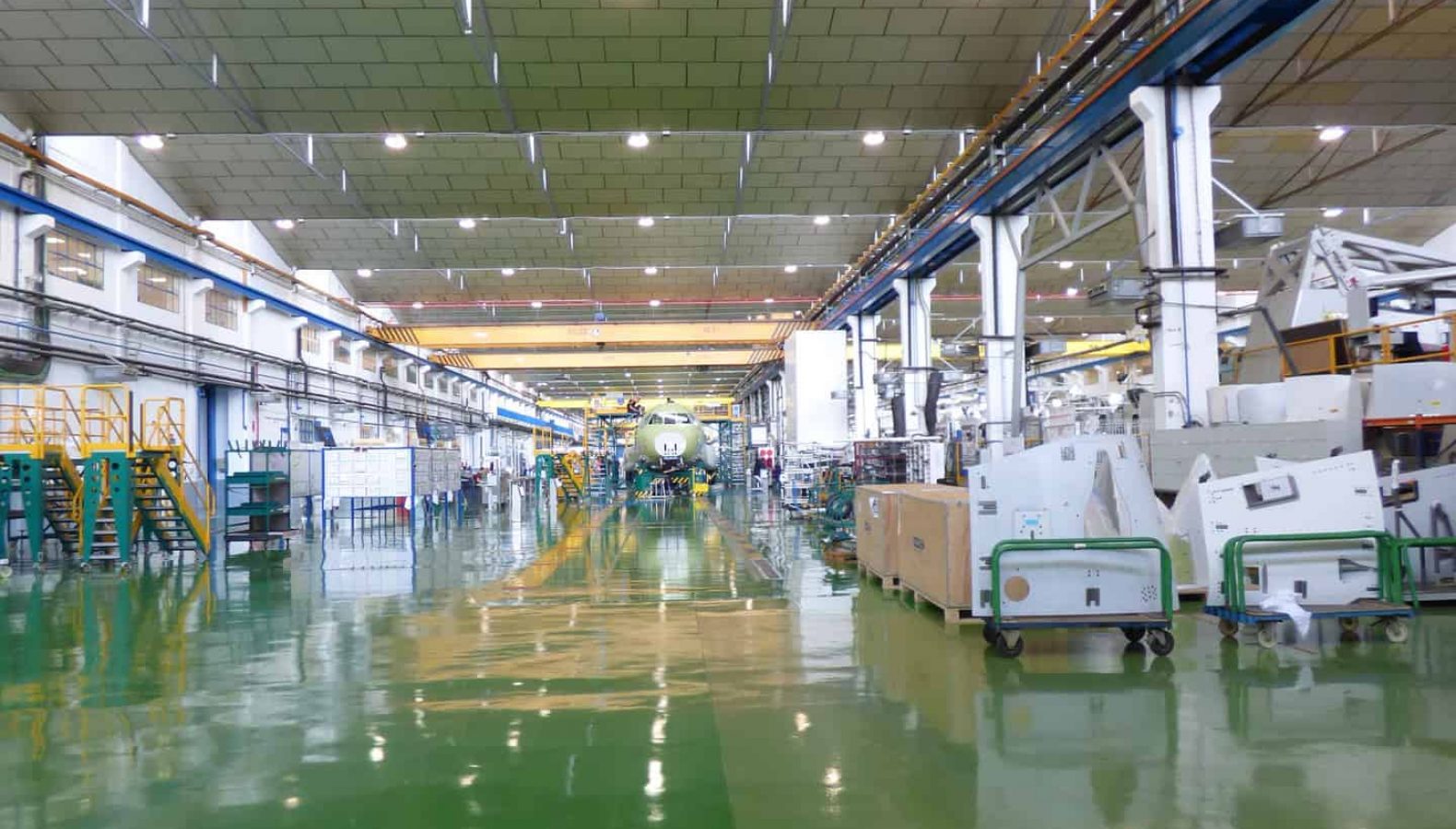
The factory site in Tablada is a living complex that is fully operative, where business activity has been and continues to be conditioned by continuous technological progress and new modes of production. The original layout has preserved the outlines marked by the arrangement of the earliest constructions. The North, South and West sides are aligned with buildings and roads, walls and enclosures at different heights and made of various materials, while the East side faces the plots of land owned by the Port of Seville.
The interventions on the site have been guided by the life cycle of the factory, with new buildings erected to meet the needs of the industrial sector it belongs to and services, gradually settling and imposing its own urban outline onto the plots of land, developing into a linear structure of streets and a green central square which has become one of its identifying features. The unbroken activity at the factory has led to a new demand for more efficient infrastructures to replace the old ones, adapted to the changes in the assembly lines and the employees’ working conditions. This continuous process of reform, adaptation and the replacement of installations by others and the need to make any renovations with environmentally sound materials is more than enough reason to justify the drafting of this Special Protection Plan to ensure that all these future projects are adapted to respect the historical legacy of the factory.
The process of submitting the Special Plan went through several phases and its provisional approval before receiving the definitive green light in February 2017.
